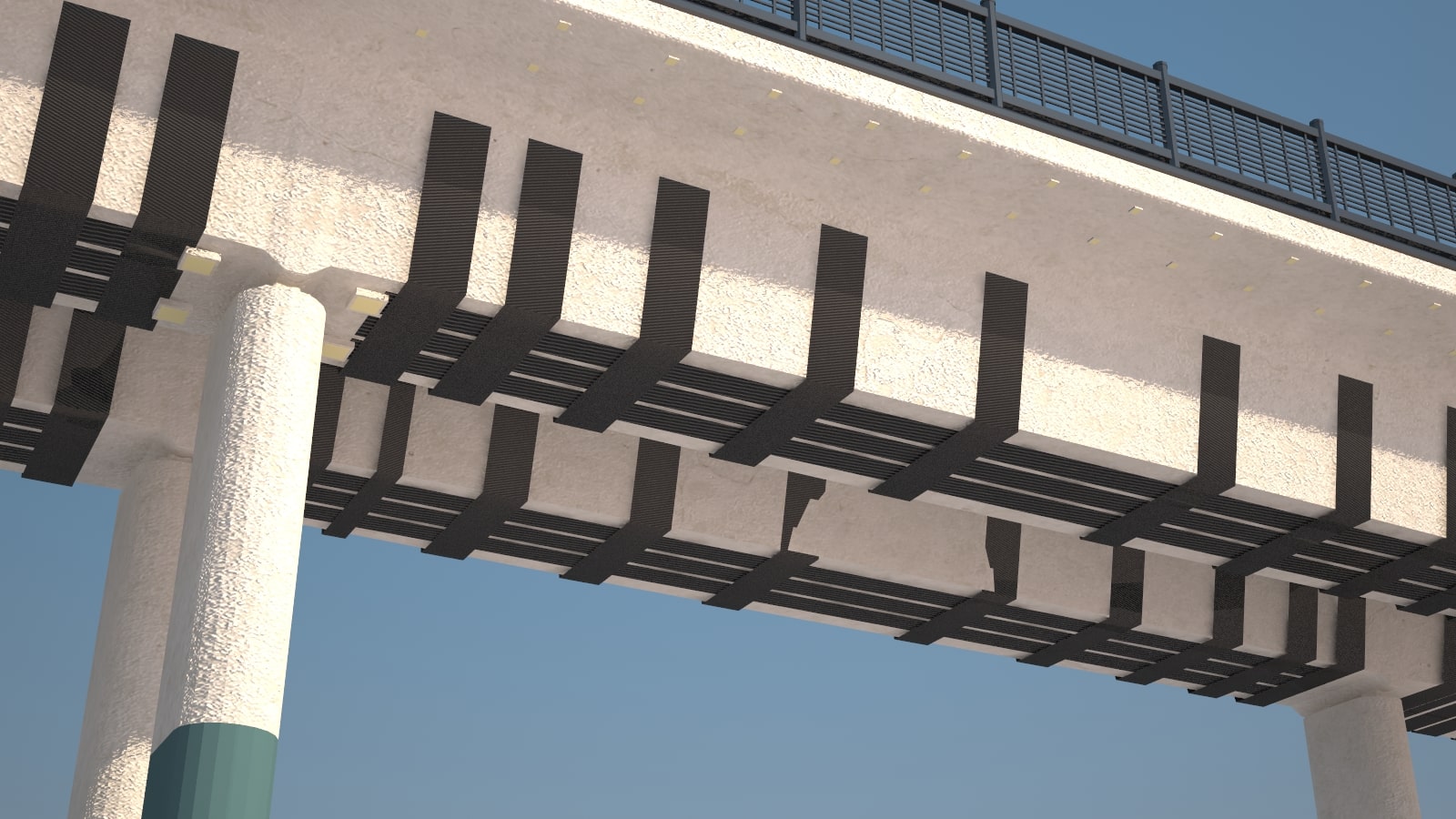
There is a need to strengthen used and worn concrete in order not to lose its function and prolong its life. This strengthening is carried out by various methods and means. Among them, polymer fiber reinforcement (Fiber Reinforced Polymers) has a special place. Carbon, aramid, kevlar, glass and basalt reinforcement materials are used in polymer fiber reinforcement. FRP composite reinforcement system is a structural material that is easily applied to all building materials from reinforced concrete, concrete, brick, stone, wood and steel.
The most widely used polymer fiber reinforcement material is carbon polymer fiber reinforcement. This reinforcement has advantages over other alternatives.
Benefits and advantages:
• The design is easy and efficient. American and European design standards have standard calculation methods.
• Different composite materials can be used for different physical requirements.
• Does not rust and does not generate a magnetic field
• It is possible to apply reinforcement in buildings without interfering with existing processes and without stopping production.
• Easy to apply and use.
• Does not require complex machinery and equipment during application.
• Can be applied to any type of surface
• Does not require maintenance.
• Increases the elastic load-bearing capacity of concrete
• Completely stops abrasion of concrete caused by external influences
• Strengthens the area where it is used and prevents abrasion
• Reduces fatigue caused by dynamic loads on concrete
• Elastic and can be applied to any surface
• It is glued with epoxy adhesive without piercing the concrete
• It is lighter than steel plate, but its tensile strength is 5-10 times higher
• Does not corrode
• Resistant to chemicals
Test laboratory results:
As a result of this test, the strength of carbon polymer fiber, a reinforcing material, was tested on concrete samples by comparing them in the laboratory. Concrete samples were prepared using standard cylindrical molds for testing.
These concrete samples were divided into 3 parts and the 1st sample was wrapped without carbon bandage (BCS0), the 2nd sample was wrapped with 1 layer carbon bandage (BCS1), and the 3rd sample was wrapped with 2 layer bandage (BCS2). The following results were obtained by applying force to each of the same weight.
• BCS0- 37.7 MPa
• BCS1-44.6 MPa
• BCS2-56.7 MP